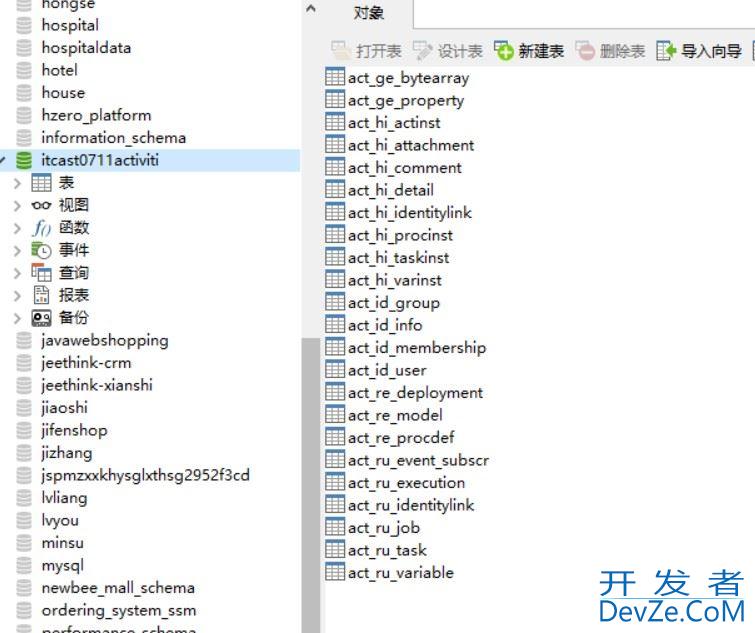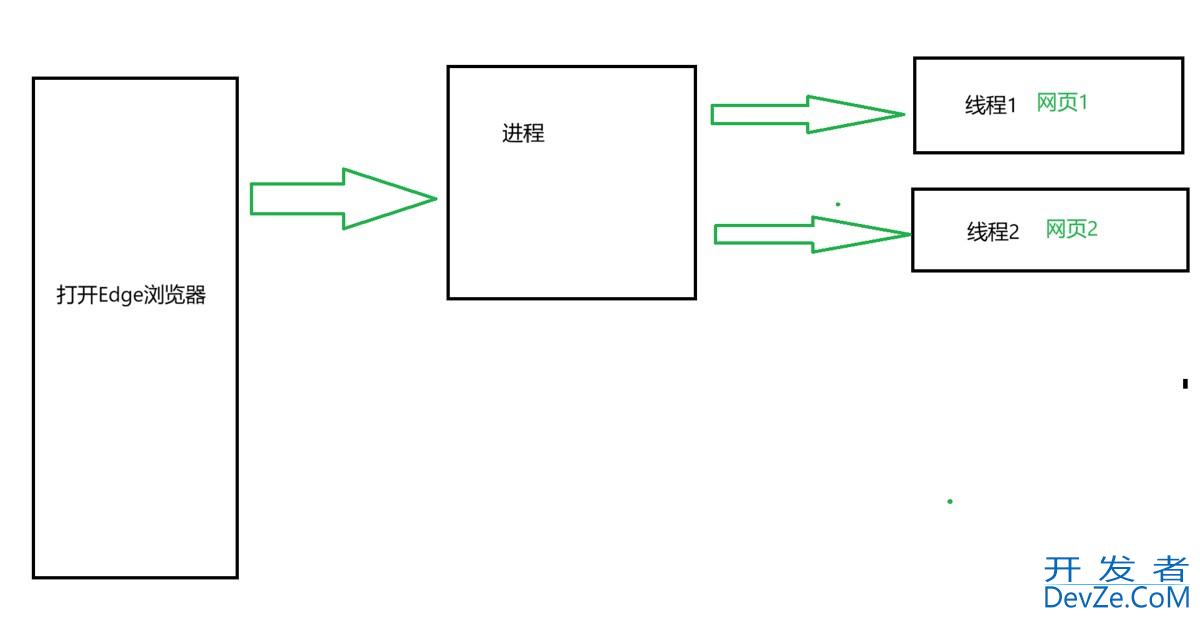目录
- 环形缓冲区核心概念
- 完整实现代码
- 关键注意事项
- 1. 线程安全设计
- 2. 空满判断策略
- 3. 指针管理
- 4. 异常安全
- 编译和运行
- 性能优化建议
- 适用场景
环形缓冲区(Circular Buffer)是一种高效的数据结构,特别适用于生产者-消费者场景、数据流处理和缓存管理。下面我将详细介绍环形缓冲区的实现原理、代码实践和注意事项。
环形缓冲区核心概念
环形缓冲区通过固定大小的数组和两个指针(读指针和写指针)实现循环使用存储空间。当指针到达数组末尾时,会回到数组开头继续操作。
完整实现代码
#include <IOStream>
#include <vector>
#include <mutex>
#include <condition_variable>
#include <thread>
#include <chrono>
#include <atomic>
#include <stdexcept>
template<typename T>
class CircularBuffer {
public:
// 构造函数
explicit CircularBuffer(size_t size)
: buffer_(size), capacity_(size), read_pos_(0), write_pos_(0),
count_(0), is_full_(false) {
if (size == 0) {
throw std::invalid_argument("Buffer size must be greater than 0");
}
}
// 默认析构函数
~CircularBuffer() = default;
// 禁止拷贝和赋值
CircularBuffer(const CircularBuffer&) = delete;
CircularBuffer& operator=(const CircularBuffer&) = delete;
// 写入数据(非阻塞)
www.devze.com bool push(const T& item) {
std::lock_guard<std::mutex> lock(mutex_);
if (is_full_) {
return false; // 缓冲区已满
}
buffer_[write_pos_] = item;
write_pos_ = (write_pos_ + 1) % capacity_;
++count_;
is_full_ = (write_pos_ == read_pos_);
not_empty_.notify_one();
return true;
}
// 写入数据(阻塞)
bool push_blocking(const T& item, std::chrono::milliseconds timeout = std::chrono::milliseconds(0)) {
std::unique_lock<std::mutex> lock(mutex_);
if (timeout.count() > 0) {
// 带超时的等待
if (!not_full_.wait_for(lock, timeout, [this]() { return !is_full_; })) {
return false; // 超时
}
} else {
// 无限等待
not_full_.wait(lock, [this]() { return !is_full_; });
}
buffer_[write_pos_] = item;
write_pos_ = (write_pos_ + 1) % capacity_;
++count_;
is_full_ = (write_pos_ == read_pos_);
not_empty_.notify_one();
return true;
}
// 读取数据(非阻塞)
bool pop(T& item) {
std::lock_guard<std::mutex> lock(mutex_);
if (eandroidmpty()) {
return false; // 缓冲区为空
}
item = buffer_[read_pos_];
read_pos_ = (read_pos_ + 1) % capacity_;
--count_;
is_full_ = false;
not_full_.notify_one();
return true;
}
// 读取数据(阻塞)
bool pop_blocking(T& item, std::chrono::milliseconds timeout = std::chrono::milliseconds(0)) {
std::unique_lock<std::mutex> lock(mutex_);
if (timeout.count() > 0) {
// 带超时的等待
if (!not_empty_.wait_for(lock, timeout, [this]() { return !empty(); })) {
return false; // 超时
}
} else {
// 无限等待
not_empty_.wait(lock, [this]() { return !empty(); });
}
item = buffer_[read_pos_];
read_pos_ = (read_pos_ + 1) % capacity_;
--count_;
is_full_ = false;
not_full_.notify_one();
return true;
}
// 查看但不移除数据
bool peek(T& item) const {
std::lock_guard<std::mutex> lock(mutex_);
if (empty()) {
return false;
}
item = buffer_[read_pos_];
return true;
}
// 清空缓冲区
void clear() {
std::lock_guard<std::mutex> lock(mutex_);
read_pos_ = write_pos_;
count_ = 0;
is_full_ = false;
// 注意:这里不需要通知条件变量,因为清空操作不会让缓冲区变满
}
// 判断是否为空
bool empty() const {
// 注意:当 read_pos_ == write_pos_ 且 !is_full_ 时为空
return (!is_full_ && (read_pos_ == write_pos_));
}
// 判断是否已满
bool full() const {
return is_full_;
}
// 获取当前元素数量
size_t size() const {
return count_;
}
// 获取容量
size_t capacity() const {
return capacity_;
}
// 获取剩余空间
size_t available() const {
return capacity_ - count_;
}
private:
std::vector<T> buffer_;
size_t capacity_;
mutable std::mutex mutex_;
std::condition_variable not_empty_;
std::condition_variable not_full_;
size_t read_pos_; // 读位置
size_t write_pos_; // 写位置
size_t count_; // 当前元素数量
bool is_full_; // 是否已满标志
};
// 无锁环形缓冲区(适用于单生产者单消费者场景)
template<typename T, size_t Size>
class LockFreeCircularBuffer {
public:
LockFreeCircularBuffer() : read_index_(0), write_index_(0) android{}
bool push(const T& item) {
size_t current_write = write_index_.load(std::memory_order_relaxed);
size_t next_write = next_index(current_write);
// 检查是否已满
if (next_write == read_index_.load(std::memory_order_acquire)) {
return false;
}
buffer_[current_write] = item;
write_index_.store(next_write, std::memory_order_release);
return true;
}
bool pop(T& item) {
size_t current_read = read_index_.load(std::memory_order_relaxed);
// 检查是否为空
if (current_read == write_index_.load(std::memory_order_acquire)) {
return false;
}
item = buffer_[current_read];
read_index_.store(next_index(current_read), std::memory_order_release);
return true;
}
bool empty() const {
return read_index_.load(std::memory_order_acquire) ==
write_index_.load(std::memory_order_acquire);
}
bool full() const {
size_t next_write = next_index(write_index_.load(std::memory_order_relaxed));
return next_write == read_index_.load(std::memory_order_acquire);
}
size_t size() const {
size_t write = write_index_.load(std::memory_order_acquire);
size_t read = read_index_.load(std::memory_order_acquire);
if (write >= read) {
return write - read;
} else {
return Size - read + write;
}
}
private:
size_t next_index(size_t current) const {
return (current + 1) % Size;
}
T buffer_[Size];
std::atomic<size_t> read_index_;
std::atomic<size_t> write_index_;
};
// 演示使用示例
void demo_usage() {
std::cout << "=== 环形缓冲区演示 ===" << std::endl;
// 创建容量为5的环形缓冲区
CircularBuffer<int> buffer(5);
// 基本操作演示
std::cout << "缓冲区容量: " << buffer.capacity() << std::endl;
std::cout << "初始大小: " << buffer.size() << std::endl;
std::cout << "是否为空: " << buffer.empty() << std::endl;
// 写入数据
for (int i = 1; i <= 5; ++i) {
if (buffer.push(i)) {
std::cout << "写入: " << i << std::endl;
}
}
std::cout << "写入5个数据后大小: " << buffer.size() << std::endl;
std::cout << "是否已满: " << buffer.full() << std::endl;编程客栈
// 尝试写入第6个数据(应该失败)
if (!buffer.push(6)) {
std::cout << "写入失败 - 缓冲区已满" << std::endl;
}
// 读取数据
int value;
while (buffer.pop(value)) {
std::cout << "读取: " << value << std::endl;
}
std::cout << "读取所有数据后大小: " << buffer.size() << std::endl;
std::cout << "是否为空: " << buffer.empty() << std::endl;
}
// 生产者-消费者演示
void producer_consumer_demo() {
std::cout << "\n=== 生产者-消费者演示 ===" << std::endl;
CircularBuffer<int> buffer(10);
std::atomic<bool> stop_producer(false);
std::atomic<bool> stop_consumer(false);
// 生产者线程
std::thread producer([&]() {
for (int i = 1; i <= 15; ++i) {
if (buffer.push_blocking(i, std::chrono::milliseconds(100))) {
std::cout << "生产: " << i << std::endl;
} else {
std::cout << "生产超时: " << i << std::endl;
}
std::this_thread::sleep_for(std::chrono::milliseconds(50));
}
stop_producer.store(true);
});
// 消费者线程
std::thread consumer([&]() {
int value;
while (!stop_producer.load() || !buffer.empty()) {
if (buffer.pop_blocking(value, std::chrono::milliseconds(200))) {
std::cout << "消费: " << value << std::endl;
}
std::this_thread::sleep_for(std::chrono::milliseconds(100));
}
stop_consumer.store(true);
});
producer.join();
consumer.join();
std::cout << "生产者-消费者演示结束" << std::endl;
}
// 性能测试
void performance_test() {
std::cout << "\n=== 性能测试 ===" << std::endl;
const int ITERATIONS = 1000000;
CircularBuffer<int> buffer(1000);
auto start = std::chrono::high_resolution_clock::now();
std::thread producer([&]() {
for (int i = 0; i < ITERATIONS; ++i) {
while (!buffer.push(i)) {
std::this_thread::yield();
}
}
});
std::thread consumer([&]() {
int value;
for (int i = 0; i < ITERATIONS; ++i) {
while (!buffer.pop(value)) {
std::this_thread::yield();
}
// 验证数据完整性
if (value != i) {
std::cerr << "数据损坏: 期望 " << i << ", 得到 " << value << std::endl;
}
}
});
producer.join();
consumer.join();
auto end = std::chrono::high_resolution_clock::now();
auto duration = std::chrono::duration_cast<std::chrono::milliseconds>(end - start);
std::cout << "处理 " << ITERATIONS << " 个元素耗时: "
<< duration.count() << " ms" << std::endl;
std::cout << "吞吐量: "
<< (ITERATIONS * 1000.0 / duration.count()) << " 操作/秒" << std::endl;
}
int main() {
try {
demo_usage();
producer_consumer_demo();
performance_test();
// 无锁缓冲区演示
std::cout << "\n=== 无锁环形缓冲区演示 ===" << std::endl;
LockFreeCircularBuffer<int, 5> lock_free_buffer;
for (int i = 1; i <= 3; ++i) {
if (lock_free_buffer.push(i)) {
std::cout << "无锁缓冲区写入: " << i << std::endl;
}
}
int value;
while (lock_free_buffer.pop(value)) {
std::cout << "无锁缓冲区读取: " << value << std::endl;
}
} catch (const std::exception&python e) {
std::cerr << "错误: " << e.what() << std::endl;
return 1;
}
return 0;
}
关键注意事项
1. 线程安全设计
- 互斥锁保护:使用
std::mutex保护共享数据 - 条件变量:使用
std::condition_variable实现高效的等待通知机制 - 内存序:无锁版本中正确使用内存序保证数据一致性
2. 空满判断策略
// 方法1:使用计数变量(推荐)
bool empty() const { return count_ == 0; }
bool full() const { return count_ == capacity_; }
// 方法2:使用标志位
bool empty() const { return !is_full_ && (read_pos_ == write_pos_); }
bool full() const { return is_full_; }
3. 指针管理
// 指针前进 read_pos_ = (read_pos_ + 1) % capacity_; write_pos_ = (write_pos_ + 1) % capacity_;
4. 异常安全
- 构造函数验证参数有效性
- 使用 RAII 管理资源
- 提供强异常安全保证
编译和运行
使用以下命令编译:
g++ -std=c++11 -pthread -O2 circular_buffer.cpp -o circular_buffer
运行:
./circular_buffer
性能优化建议
- 缓存友好:确保数据连续存储,提高缓存命中率
- 减少锁竞争:使用细粒度锁或无锁设计
- 批量操作:支持批量读写减少锁开销
- 内存预分配:避免动态内存分配
适用场景
- 数据流处理(音频、视频流)
- 生产者-消费者模式
- 网络数据包缓冲
- 实时系统数据交换
- 日志记录系统
这个实现提供了完整的环形缓冲区功能,包括线程安全、阻塞/非阻塞操作、异常安全等特性,可以直接在生产环境中使用。
到此这篇关于C++环形缓冲区实践与注意事项的文章就介绍到这了,更多相关C++环形缓冲区内容请搜索编程客栈(www.devze.com)以前的文章或继续浏览下面的相关文章希望大家以后多多支持编程客栈(www.devze.com)!








 加载中,请稍侯......
加载中,请稍侯......
精彩评论